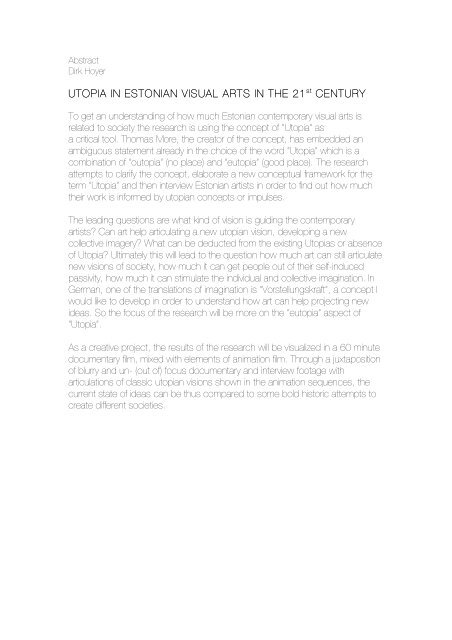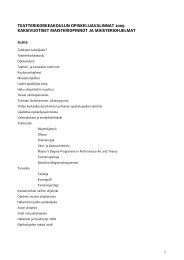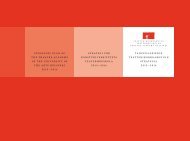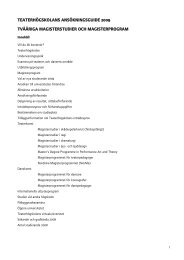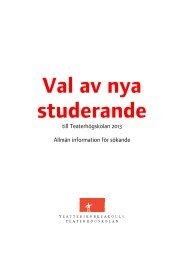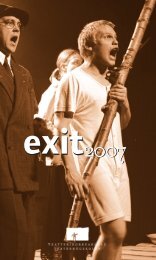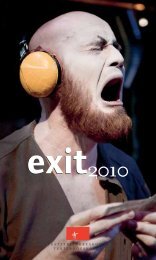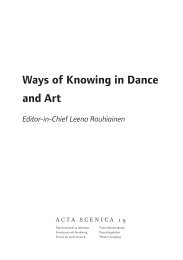abstract dirk hoyer
abstract dirk hoyer
abstract dirk hoyer
Create successful ePaper yourself
Turn your PDF publications into a flip-book with our unique Google optimized e-Paper software.
Abstract<br />
Dirk Hoyer<br />
UTOPIA IN ESTONIAN VISUAL ARTS IN THE 21 st CENTURY<br />
To get an understanding of how much Estonian contemporary visual arts is<br />
related to society the research is using the concept of “Utopia” as<br />
a critical tool. Thomas More, the creator of the concept, has embedded an<br />
ambiguous statement already in the choice of the word “Utopia” which is a<br />
combination of “outopia” (no place) and “eutopia” (good place). The research<br />
attempts to clarify the concept, elaborate a new conceptual framework for the<br />
term “Utopia” and then interview Estonian artists in order to find out how much<br />
their work is informed by utopian concepts or impulses.<br />
The leading questions are what kind of vision is guiding the contemporary<br />
artists? Can art help articulating a new utopian vision, developing a new<br />
collective imagery? What can be deducted from the existing Utopias or absence<br />
of Utopia? Ultimately this will lead to the question how much art can still articulate<br />
new visions of society, how much it can get people out of their self-induced<br />
passivity, how much it can stimulate the individual and collective imagination. In<br />
German, one of the translations of imagination is “Vorstellungskraft”, a concept I<br />
would like to develop in order to understand how art can help projecting new<br />
ideas. So the focus of the research will be more on the “eutopia” aspect of<br />
“Utopia”.<br />
As a creative project, the results of the research will be visualized in a 60 minute<br />
documentary film, mixed with elements of animation film. Through a juxtaposition<br />
of blurry and un- (out of) focus documentary and interview footage with<br />
articulations of classic utopian visions shown in the animation sequences, the<br />
current state of ideas can be thus compared to some bold historic attempts to<br />
create different societies.
Dirk Hoyer<br />
Abstract of the TAhTO presentation 26/11<br />
OUTOPIA<br />
In the end of October I test-shot some material with my cinematographer.<br />
During the two days we mainly tested some cameras and shot material which<br />
shall illustrate the current state of Estonian society through juxtapositions of<br />
architecture. For two hours we also shot at the (former) site of the Estonian<br />
Academy of Arts (EKA) which has now been torn down and through a series of<br />
unfortunate events ended up as a parking lot, leaving EKA without a building.<br />
From the material shot at EKA I edited a 2minute rough cut, a clip called<br />
“OUTOPIA”.<br />
The raw state of the extract demonstrates one basic problem in audio-visual<br />
production: unfinished material should never be publicly shown.<br />
For the sake of the demonstration the clip “Outopia” is a mere short sketch that<br />
is not intended to be a stylistic demonstration of how the documentary film will<br />
look like. In fact, the shooting style, the editing style, the approach to the subject<br />
and the sound-track in the documentary will be fundamentally different.<br />
Consequently the clip is named “Outopia”, not only because the parking lot is a<br />
no-place, that used to be the only Academy of Art in Estonia, but also because<br />
the clip is a no-place on the way to the final documentary.<br />
In the presentation that follows the clip, I will try to describe the methodological<br />
approach of its production and of the actual production of the documentary film.


